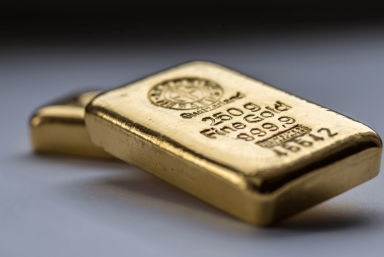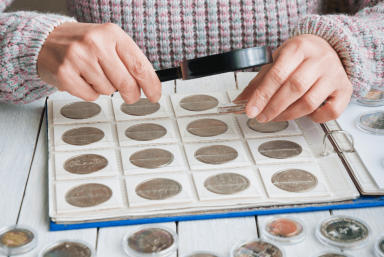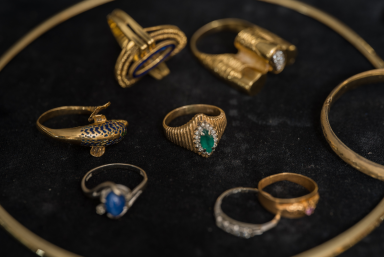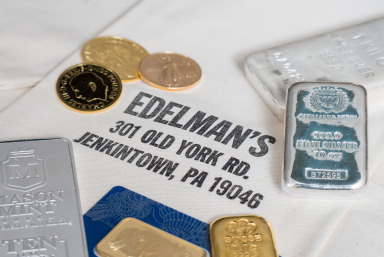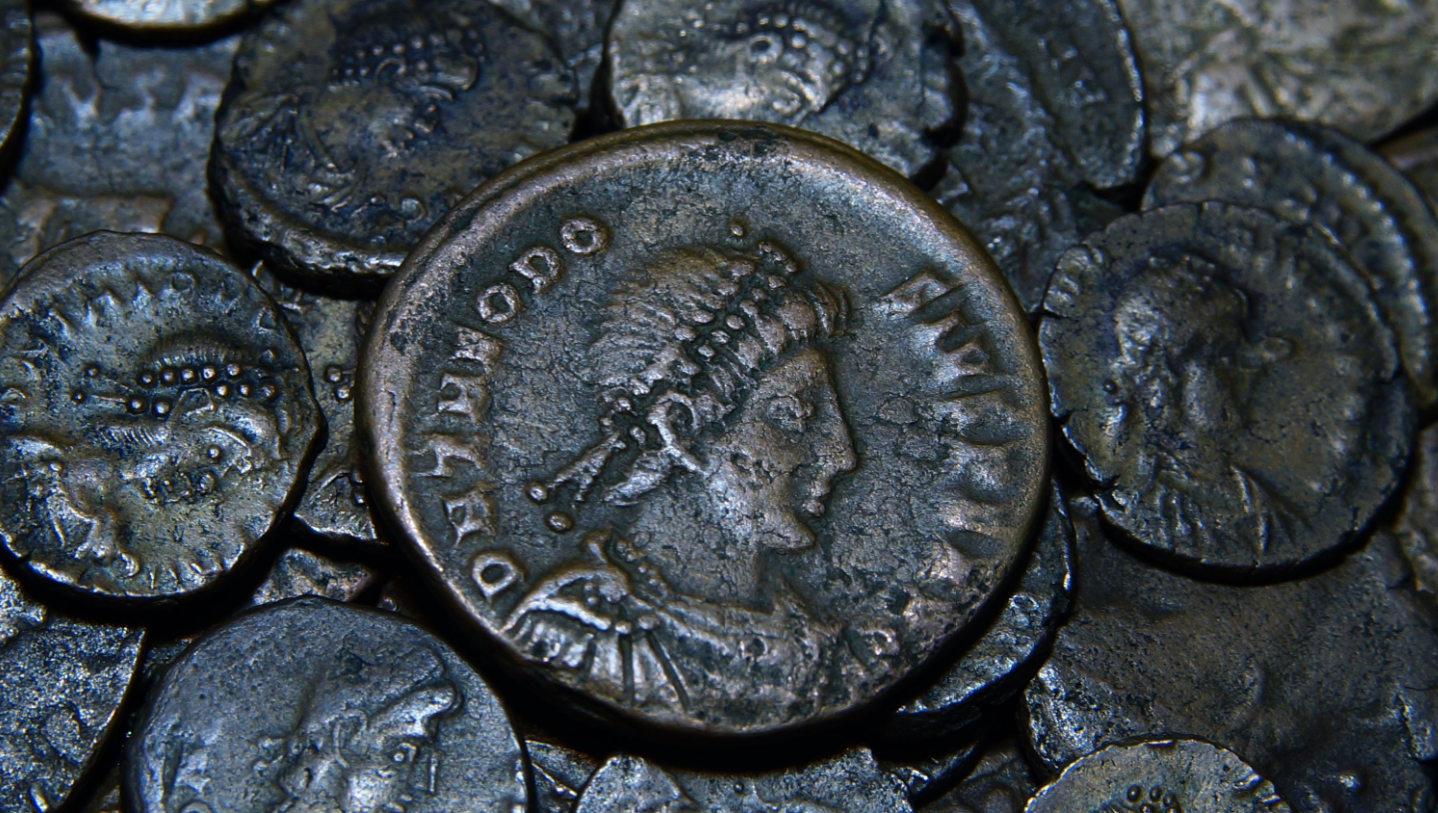
For thousands of years, coins have been a symbol of power, wealth, and culture. They provide a unique insight into the economics of previous civilizations and the political and social fabric of the era. Over time, coin design has evolved to reflect changes in art, technology, and society. This blog post explores the rich history of coin design and its changing significance throughout time.
The History of Coin Making
The origins of coin-making date back thousands of years to the 7th century B.C., when the Lydians began striking coins in modern-day Turkey. Early coins were made of electrum, a naturally occurring alloy of gold and silver and often marked with simple symbols, such as animals or geometric shapes. Some of these examples can be seen and purchased in Edelman’s Jenkintown Showroom, come hold coins that are 2500+ years old in your hand! These early coins marked the beginning of what we now call the “coinage history”, a period where coins became the primary means of exchange, replacing a pure bartering system.
Coinage soon spread from Lydia to other ancient civilizations, including the Greeks and the Romans. The Greeks advanced coin design by introducing more detailed images of gods, goddesses, and rulers. Coins began to serve as a form of propaganda, with leaders using their own coins to project power and legitimacy. The technical work of engraving also improved, with truly beautiful works of art being produced as early as the 4th century B.C. The metals used to strike coins also evolved over time. Bronze and copper were usually used for lower-denomination coins, and silver and gold were introduced to strike higher-denomination coins.
The Historical Significance of Coins
Coins have always provided a great deal of information for historians and archaeologists. How does the study of coins help historians? Numismatics, the study of coins and currency, offers crucial insights into the past. Coins often depict the likeness of rulers, allowing us to see what ancient emperors and their wives looked like. They also depicted important historical events with dates inscribed on the coins, verifying famous battles and more. Coins also provide valuable data about ancient languages, helping us to decipher ancient texts from lost civilizations.
Because coins have been found throughout the world, we can determine ancient trade routes and economic interactions between civilizations. The discovery of Roman coins in far-off regions like India and China demonstrates the vast scope of their trade network.
Coins can also reflect periods of prosperity or decline. Changes in the quality of the metal used in coin production often indicate the stress of inflation. The practice of reducing the purity of silver in coins during difficult economic periods still occurs today, just as it did in Ancient Rome.
History of Coin Design
The overall design of coins has undergone significant transformations but still generally resembles what we used over two thousand years ago. Coin designs have become more elaborate over time, with Greece starting the trend of depicting gods and goddesses. Shortly after, Roman coins also began to depict their rulers, military victories, and allegories of strength.
The Renaissance saw a renewed interest in classical designs. Coin designs drew inspiration from Ancient Greece and Rome during this era but began to include coats of arms and territorial depictions. The art of engraving also became more sophisticated, allowing for additional attention to detail in the designs.
Fast-forward to modern times, and we see how coin design has continued to evolve. Advances in technology have allowed for greater precision, for artists to truly transpose their vision directly onto coins. Today, coins serve as currency and collectibles, commemorating influential figures, events, and anniversaries.
U.S. Coin History Timeline: Who Designed the First Coin?
The history of coin design in the United States offers a fascinating look into the development of the nation itself. The first U.S. coin was the Fugio Cent or “Franklin Cent,” designed by Benjamin Franklin in 1787 (and available at Edelman’s in Jenkintown!). This early coin featured the words “Mind Your Business” along with a sun and sundial, reflecting Franklin’s emphasis on hard work and self-reliance.
In 1792, the U.S. Mint was established in Philadelphia, beginning the period of official U.S. coinage. Prior to this, people traded with coins struck for each of the thirteen colonies or Spanish Milled coins. The honor of designing the first official U.S. coin goes to Robert Scot, the nation’s first Chief Engraver. Scot’s designs featured Lady Liberty with flowing hair, and a heraldic eagle of the reverse, both becoming recurring motifs for decades to come.
Throughout the 19th and 20th centuries, U.S. coins saw numerous changes in design, with famous introductions being the Morgan Silver Dollar in 1878, the Lincoln Cent in 1909, and the Buffalo Nickel in 1913. Each coin design reflects the cultural and political values of the era, from westward expansion (the Buffalo Nickel) to the honoring of Abraham Lincoln on the one-cent coin (our longest-running unchanged design in US history!).
Challenge Coins, dating back to World War I, are an aspect of military coin design. They often depict insignias, emblems, and mottos and have become a significant part of military tradition, exchanged as a gesture of respect or awarded for exceptional service.
How Have Coins Changed Over Time?
There have been many changes over the years, but the removal of precious metals from our coinage is the largest. Since the introduction of coins as a means of trade, the intrinsic value of the actual coin has represented the value in trade. Only in the last 50 years have we removed this underlying backing of value, and now we depend on the good faith of the government to back the value of our coinage. The depictions on coins have also changed to focus on royalty to show national identity. Limited edition coins are also widely produced solely for collecting purposes, featuring everything from Olympic athletes to famous landmarks.
Importance of Coins in History
Coins serve more than just a medium of exchange. They are also historical artifacts that reflect different periods’ values, technologies, and artistic achievements. Coins provide a tangible connection to the past, where you can hold something in your hands that is two thousand years old and possibly used to buy bread in an ancient food market.
Coinage history is as rich and varied as the civilizations that minted them. From the first coin in the world to the evolution of U.S. coin history, the design of coins has changed dramatically over time. Whether used as currency, propaganda, or symbols of honor, coins have always played a significant role in human history, leaving behind a legacy that is as enduring as the metal from which they are made.
Want to learn more about coin history? Contact us today for more information.

